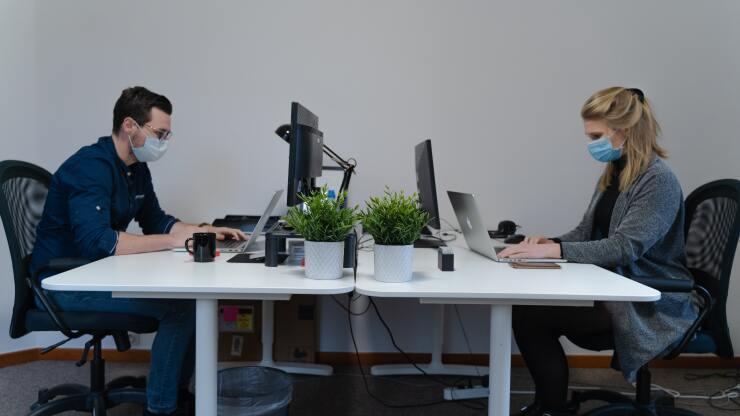Another COVID-19 variant is threatening the safety of office reopenings everywhere — and this time the change might be permanent.
The
“With [the original strand] of COVID, everyone was accommodating to this completely remote schedule and waiting until we could all return to the office,” says Jeanniey Walden, chief innovation and marketing officer at payroll solutions DailyPay. “We had that false sense of hope we could return to the office.”
Read more:
But now with the new strain — which is milder in symptoms but much more contagious — employers are wondering what this means for the long-term.
“Companies started to put their return-to-work plans on hold, but were expecting that post-holiday, we would all be back in the office in January,” Walden says. “But now there's already conversations about two new strains of variants that have been identified in other parts of the world and there’s the realization that hybrid and remote might just be the way of the future.”
Remote work and hybrid offices were already gaining
“It's a tough pill to swallow [for employers], because at this time of year people are trying to close their books for the end of their fiscal year,” Walden says. “[Companies] have invested in real estate and they've invested in infrastructure and they took the time during COVID to fix it to support the ‘new return to work.’”
Read more:
Some of that infrastructure included building hoteling stations for their employees, which provided temporary in-person workspaces, but employers may just have to come to terms with that large capital investment not paying out, according to Walden. Instead, they'll need to learn to adapt quickly and look at office management practices, rather than long-term fixes if they want to keep the employees they have, and bring new ones in.”
Staffing shortages will also continue to be an issue, and Walden says restaurants and small businesses in particular will need to
“More variants are going to keep coming out and it's going to keep being a problem that won’t be fixed as quickly as we initially thought,” Walden says. “[Think about] some long-term changes that aren't going to go anywhere.”






